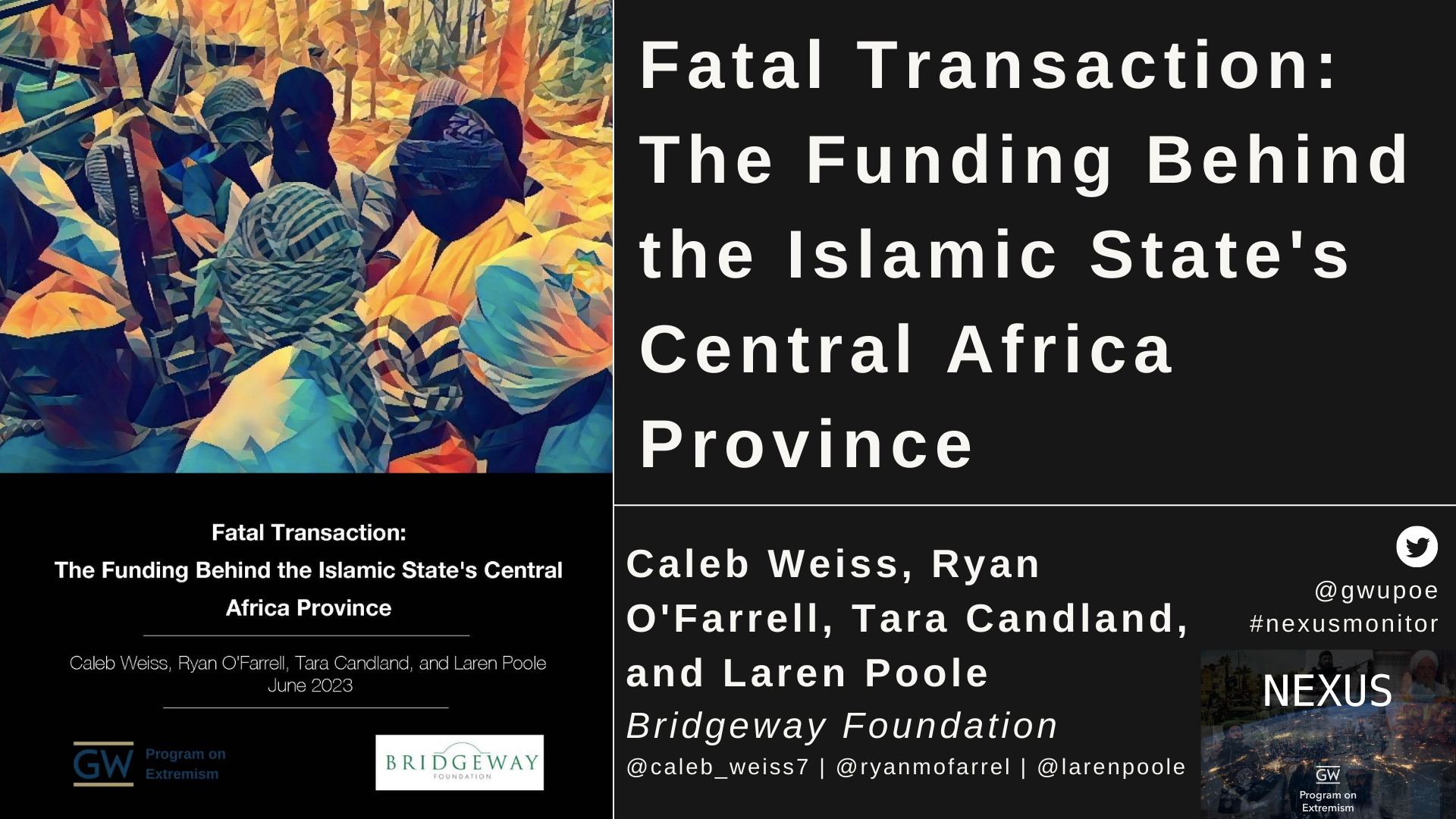In 2021, the Islamic State’s Central Africa Province (ISCAP), locally known as the Allied Democratic Forces (ADF), perpetrated a series of suicide and urban bombings in the Democratic Republic of the Congo and Uganda and attempted similar plots inside Rwanda.1 Just four years earlier, these attacks would have been virtually unthinkable for most observers of the group. In 2017, with the ADF at its nadir for both civilian violence and operational activity, the group was still a relatively little-understood rebellion whose threat was largely confined to a small area of Congo’s restive east. Few predicted its current trajectory, and even fewer predicted the path it would take to get there.
Relying on the authors’ own primary source research and investigations across Uganda, the Democratic Republic of the Congo, Rwanda, and Kenya, this paper details how, in just a few short years, this localized rebel group transformed into a significant regional terrorist threat. Thanks to the ADF’s relationship with the Islamic State, which began with financial transfers to the former in 2017, the ADF not only overcame the loss of its previous funding streams precipitated by the arrest of its former leader, but also expanded its operations in East and Central Africa.2 Officially adopting the Islamic State’s moniker and identity as its Central Africa Province in 2019, ISCAP has since become one of the Islamic State’s most active global branches, killing thousands and routinely featuring in the Islamic State’s centrally released propaganda. ISCAP’s current status as a significant regional threat is a testament to the power of the Islamic State’s money flowing into its coffers.
The authors posit that the Islamic State’s funding to ISCAP has largely mirrored the former’s own evolution and differing tactics in which it has funded its global affiliates more broadly. Generally speaking, the Islamic State has used two main funding methods: 1) direct funding of affiliates from money gained when it controlled a territorial caliphate in Iraq and Syria, and 2) a regionally pooled approach in which regional “offices” oversee revenue generation and distribution to help finance Islamic State affiliates in their area of responsibility. As the Islamic State moved affiliates from the first to the second method, they often went through a transition period wherein the Islamic State relied on a series of financial middlemen – or interconnected financial networks around the world – to transfer money to the affiliates. In addition to these financing schemes, local affiliates at times generated income independent of the Islamic State’s wider networks. Though it is difficult to provide concrete time periods for each method of financing – the evolution for each affiliate was based on both the Islamic State’s resources and local needs and abilities – the authors propose general date ranges while acknowledging that there was significant temporal overlap as these financing methods evolved. The paper, however, is organized around these distinctive broad evolutionary phases.
The authors first find that at the height of its territorial caliphate in Iraq and Syria, roughly between 2014 and 2016, the Islamic State largely provided direct funding to its global wings from its own coffers in the Middle East. The ADF did not benefit from the Islamic State’s money at this time, but rather began its relationship with the global jihadist organization during the latter’s aforementioned transition phase. Around 2017, as the Islamic State was rapidly losing its territorial caliphate in Iraq and Syria, it was forced to become more decentralized in its funding to its global affiliates. One such way the authors find that the Islamic State managed this was through the reliance of financial middlemen or interconnected global financial networks, often still under the direction of Islamic State central leadership. These networks or middlemen helped channel – and at times, fundraise – the Islamic State’s money to its regional affiliates. It is during this period that the ADF received its first financial transfers from the Islamic State which helped jumpstart the dying group.
With the forced decentralization of the Islamic State’s funding mechanisms, the authors argue, the group has encouraged its affiliates to be more financially independent. This does not, however, preclude lateral financial ties between affiliates. In fact, it is through these lateral ties that the Islamic State’s current favored method of financing exists, which the authors refer to as regionally pooled funding. Regional Islamic State financial networks help to generate funds locally and pool their resources, using nodes and cutouts to move money across the often vast geographic region to help fund Islamic State affiliates within their area of responsibility. This model thus exists outside of a truly local or truly global system for financing affiliates. Although the exact starting date for this method is unclear – this model likely started sometime after 2018 – it now appears to be the norm for the organization.
In line with this framework, the authors find that the Islamic State’s Central Africa Province has largely relied on and benefited from such an interconnected network across central, eastern, and southern Africa. In fact, the manner in which ISCAP is now funded and supported acts as the quintessential model for how the Islamic State is both administratively structured and finances its global wings. Overseen by the Islamic State’s Somalia Province and its Al-Karrar Office – just one of many of the Islamic State’s so-called “regional offices” – financial networks and cells in Somalia, Kenya, Uganda, Tanzania, and South Africa have helped pool resources and funds to support ISCAP inside Congo. Money locally generated in Somalia and South Africa, for instance, has been transferred to ISCAP operatives through wireless transfer methods or through physical hand-offs. Given the relative amounts of income generated from the Islamic State compared to ISCAP’s local sources, the authors conclude that it is primarily through the Islamic State’s money and support that ISCAP has transformed itself from a relatively obscure Ugandan rebel group in Congo to a regional threat.



